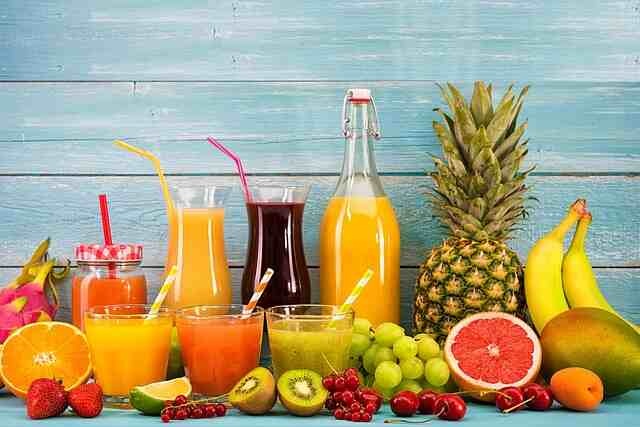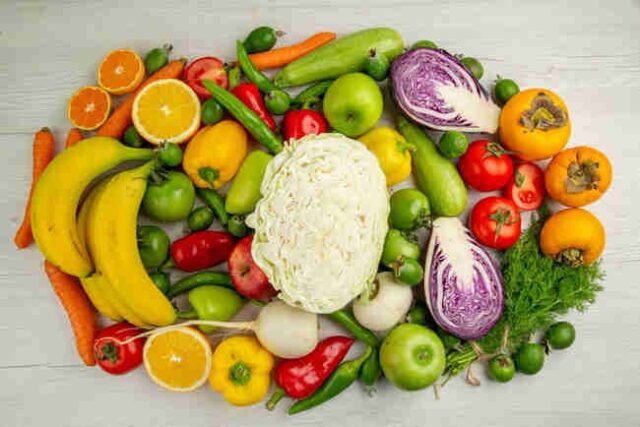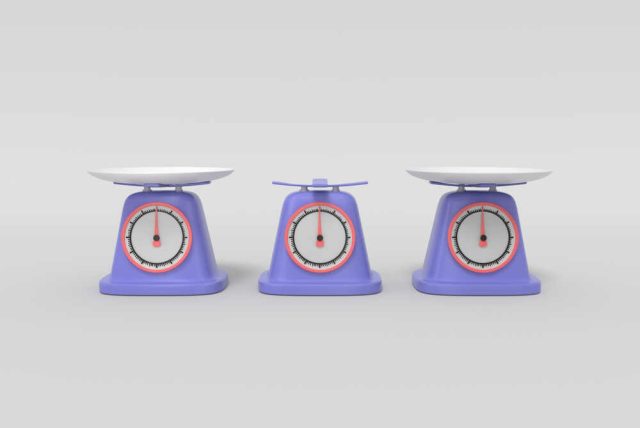
Clear Liquid Diet – What You Need to Know for a Refreshing Reset
Are you searching for a way to give your digestive system a break, recover from surgery, or prepare for a medical procedure like colonoscopy? Look no further than the clear liquid diet!
In this article, we’ll dive into the details of this unique dietary plan, exploring its purpose, what you can consume, and how to follow it effectively. So, let’s get started on this refreshing journey!
What Is Clear Liquid Diet?
A clear liquid diet is a temporary dietary plan that involves consuming only transparent liquids that leave no residue in the digestive system.
It is commonly used before and after medical procedures or to provide relief from certain gastrointestinal symptoms.
The purpose of the diet is to provide hydration and essential nutrients while giving the digestive system a chance to rest and heal.
Approved clear liquids typically include water, broth, fruit juices without pulp, tea or coffee without milk or cream, clear sodas, gelatin, and popsicles. It’s important to follow the guidelines provided by healthcare professionals and to consult with them for personalized advice.
What’s the difference between a clear liquid diet and a full liquid diet?
Full liquids are of a thicker consistency like a a diet upgrade when compared to clear liquids, it offers more calories, protein, and vital nutrients.” In addition to clear liquids, a full liquid diet might include strained or blended soups, milk or milk substitutes, dietary supplements, yogurt, ice cream, fruit puree, pudding, sherbet, strained oats, and cream of wheat.
Full liquid diet is often used as a transitional diet after a clear liquid diet or for individuals with specific medical conditions or difficulties with chewing or swallowing.
The Purpose Behind the Diet – Clear Liquid Diet
The clear liquid diet serves various purposes depending on the situation. It is commonly used before and after medical procedures, such as surgeries or colonoscopies, to ensure the colon is completely clear. Additionally, it can aid in recovery from digestive disorders, such as gastroenteritis, and provide relief from certain gastrointestinal symptoms like nausea and vomiting.
What’s on the Menu?
Now that we know the purpose, let’s talk about what you can consume on a clear liquid diet. The options are limited, but there are still plenty of refreshing choices available. Some of the permitted liquids include water, broth, fruit juices without pulp, tea or coffee without milk or cream, clear sodas, gelatin, and popsicles.
Clear Liquid Diet Foods List
The clear liquid diet, as its name suggests, consists of liquids that are transparent at room temperature. This can be a little challenging because some meals are only permitted in certain tastes, such as black coffee instead of milky coffee or light-colored Jello as opposed to red. Here is a complete list of what you can eat and drink while following a clear liquid diet:
- Kool-Aid
- Jell-O in a pale tint (no red or purple)
- Juice that is clear, like apple, grape, or cranberry
- Popsicles, but not ones with fruit in them
- clear chicken, beef, or vegetable broth
- Sports beverages like Gatorade
- a crystal-clear soda like 7UP, Sprite, or ginger ale
- slushy water
- Iced fruit, like lemonade
- Clear electrolyte replacement beverages, such as Pedialyte,
- nutrients in clear liquid form, like Keep Clear
- black coffee
- Tea
- lemonade (Pulp-free)
How to Follow the Clear Liquid Diet
To effectively follow a clear liquid diet, it’s important to understand the guidelines. The key is to avoid any solid foods, dairy products, and beverages that are colored or contain pulp. Instead, focus on sipping small amounts of the approved clear liquids throughout the day to maintain hydration and provide essential nutrients.
Who Should Follow a Clear Liquid Diet?
Before a colonoscopy
A clear liquid diet is advised 24 hours prior to the colonoscopy investigation, this drink helps to cleanse the intestines. So that the doctor can see clearly in the colon area, this keeps the gastrointestinal system clean of any food.
Before or after surgery
Pre- or post-surgery, is when “A clear liquid diet is typically used for a short period.” The clear liquid diet is prescribed before to surgery in order to hydrate the patient and lessen bowel movement. Following surgery, the clear liquid diet increases fluid intake, lessens motion sickness, and lessens gastrointestinal distress. After surgery, it is utilized as a step toward solid meals.
In order to treat vomiting or diarrhea
To give the gastrointestinal tract a rest from heavy meals, it may also be utilized by someone who is experiencing vomiting, nausea, or diarrhea. . According to Andrews three to five days should be the maximum duration for a clear liquid diet.
Duration of the Clear Liquid Diet
The duration of the clear liquid diet varies depending on the reason for following it. In some cases, it may last only a day or two before a medical procedure. Duration is 2 days – 5 days before and surgery, For other situations, such as recovery from surgery or managing digestive issues, it may be necessary to follow the diet for a longer period. Always follow the guidance of your healthcare professional regarding the duration.
Getting the Nutrients You Need
One common concern about the clear liquid diet is whether it provides sufficient nutrients. While it is limited in terms of variety, it can still provide essential hydration and some nutrients. However, it’s crucial to remember that this diet is designed for short-term use and not for long-term sustenance. Once you transition back to solid foods, you can resume your usual nutrient-rich diet.
Breaking the Diet: Transitioning to Solid Foods
After following the clear liquid diet, it’s important to reintroduce solid foods gradually. Start with easily digestible foods such as cooked vegetables, fruits, and lean proteins. Slowly progress to more complex foods
Health Benefits Of Clear Liquid Diet
The clear liquid diet offers several benefits, including:
Hydration: Clear liquids, such as water and broths, help maintain hydration levels in the body, especially when solid foods may be difficult to consume.
Resting the Digestive System: By avoiding solid foods, the clear liquid diet gives the digestive system a break, allowing it to rest and recover from inflammation or irritation.
Preparation for Medical Procedures: The diet helps clear the digestive tract before certain medical procedures, such as surgeries or colonoscopies, ensuring optimal visibility and reducing the risk of complications.
Relief from Gastrointestinal Symptoms: The clear liquid diet can provide relief from gastrointestinal symptoms like nausea, vomiting, and diarrhea, as it eliminates potential triggers and irritants.
Easy to Digest: Clear liquids are easier for the body to digest compared to solid foods, making it beneficial for individuals with digestive disorders or those recovering from surgery.
Nutrient Intake: While the clear liquid diet is limited in variety, it still provides essential hydration and some necessary nutrients, ensuring minimal malnutrition during the short-term duration.
Short-term Reset: The diet offers a short-term reset for the digestive system, allowing it to recalibrate and potentially alleviate certain digestive issues.
Psychological Preparation: Following a clear liquid diet before a medical procedure or surgery can mentally prepare individuals for the dietary restrictions and help them adhere to the necessary guidelines.
Remember, the clear liquid diet is typically recommended for a short duration under the guidance of healthcare professionals.
Frequently Asked Questions (FAQs) – Clear Liquid Diet
Can I consume any type of fruit juice?
Fruit juices without pulp, such as apple or grape juice, are allowed on the clear liquid diet. However, it’s best to avoid citrus juices as they can irritate the digestive system.
Can I add sugar or sweeteners to my beverages?
While it’s generally recommended to avoid added sugars during the clear liquid diet, a small amount of sugar or sweeteners can be used sparingly if needed. However, it’s best to consult with your healthcare provider for specific guidelines.
Can I have carbonated beverages?
Clear sodas and carbonated beverages are usually permitted on the clear liquid diet. However, it’s important to choose options without artificial colors or flavors.
Can I drink milk or dairy products?
Dairy products, including milk, are not allowed on the clear liquid diet. Stick to clear liquids and avoid anything that can leave residue in your digestive system.
Can I consume nutritional supplements or protein shakes?
In most cases, nutritional supplements and protein shakes are not considered part of the clear liquid diet. It’s best to consult your healthcare provider for guidance on whether they can be included.
Can I have clear soup with vegetables?
While broth-based soups are generally allowed, it’s important to strain out any solid pieces or vegetables. The goal of the clear liquid diet is to consume transparent liquids without residue.
How can I manage hunger during the clear liquid diet?
Hunger can be managed by sipping clear liquids frequently throughout the day. You can also distract yourself with activities, such as reading or light exercise, to help take your mind off food.
Are there any potential side effects of the clear liquid diet?
Since the clear liquid diet is short-term, there are usually no significant side effects. However, some individuals may experience mild hunger, weakness, or changes in bowel movements. If you have any concerns, consult your healthcare provider.
Can I brush my teeth while on the clear liquid diet?
Yes, you can continue to practice good oral hygiene during the clear liquid diet. Just make sure to avoid swallowing any toothpaste or mouthwash.
Can I drink coffee or tea?
You can enjoy coffee or tea without milk or cream on the clear liquid diet. Just remember to consume them in moderation and opt for decaffeinated versions if needed.
Conclusion
The clear liquid diet provides a temporary reset for your digestive system, allowing it to rest and heal. By following the guidelines and consuming a variety of approved clear liquids, you can maintain hydration and obtain essential nutrients during this short-term dietary plan. Remember, the clear liquid diet should always be followed under the guidance of a healthcare professional
Is applesauce OK for a clear liquid diet?
No, applesauce is not typically considered suitable for a clear liquid diet. The purpose of a clear liquid diet is to consume liquids that are transparent and leave no residue in the digestive system.
While applesauce may be easy to swallow, it contains fiber and solid particles that can leave residue in the digestive tract. It’s best to stick to clear liquids such as water, broth, fruit juices without pulp, tea or coffee without milk or cream, clear sodas, gelatin, and popsicles when following a clear liquid diet. Remember to consult with your healthcare provider for specific dietary recommendations based on your individual needs.
Side Effect Of Clear Liquid Diet
While the clear liquid diet is generally safe for short-term use, there can be some potential side effects and considerations to keep in mind:
Hunger and Cravings: Since the diet restricts solid foods, it’s common to experience hunger pangs and cravings, especially in the initial stages. However, reminding yourself of the temporary nature of the diet and staying focused on the purpose can help manage these feelings.
Nutrient Deficiencies: While the clear liquid diet provides hydration and some essential nutrients, it is limited in terms of variety and may not provide all the necessary nutrients for long-term sustenance. It’s crucial to transition back to a balanced diet as soon as the clear liquid diet is complete to ensure adequate nutrient intake.
Weakness and Fatigue: As the diet is low in calories and lacks solid foods, some individuals may experience temporary weakness or fatigue. It’s important to rest, listen to your body, and not engage in strenuous activities during this time.
Changes in Bowel Movements: Due to the absence of fiber and solid foods, bowel movements may become less frequent or change in consistency. It’s generally temporary and should return to normal once solid foods are reintroduced.
Potential Discomfort: Some individuals may experience discomfort, such as bloating or gas, as the body adjusts to the change in diet. However, these symptoms are usually mild and transient.


